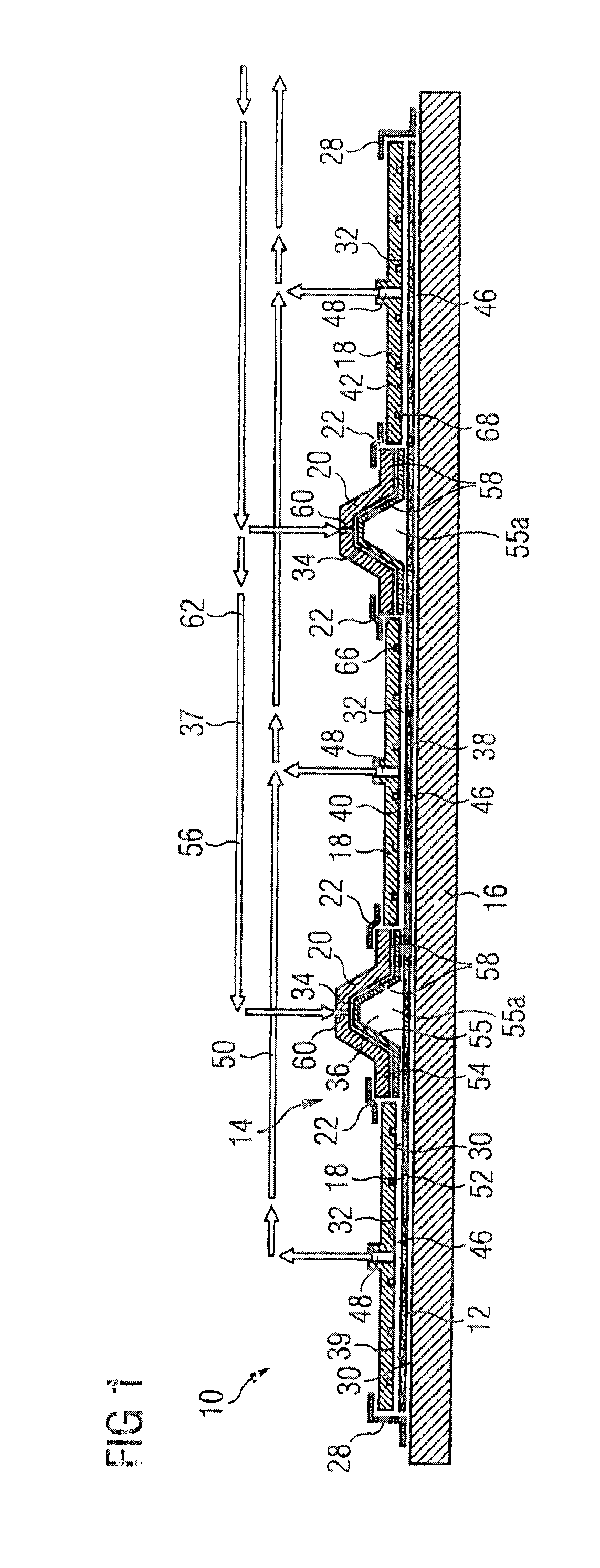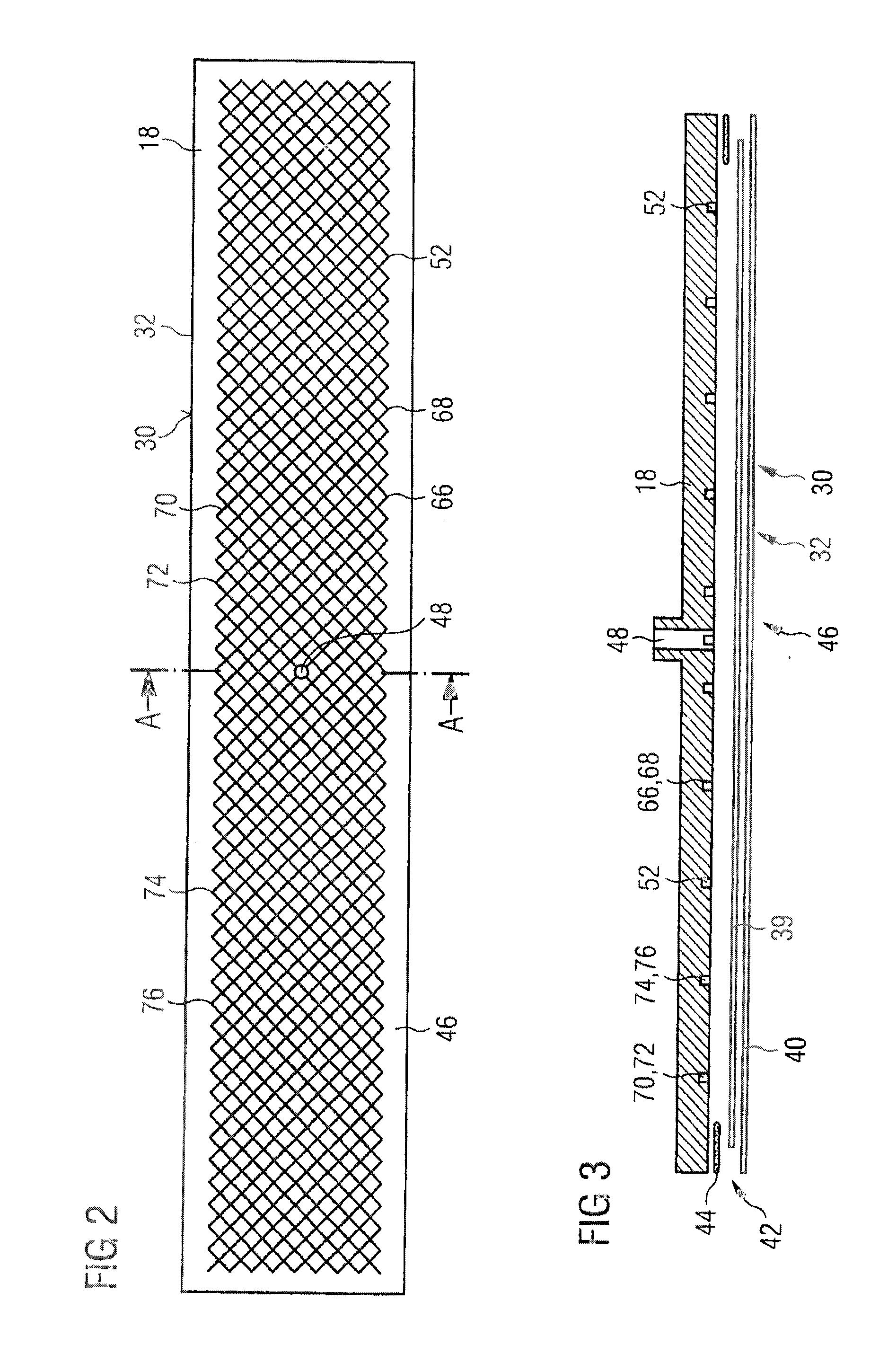Mold for Producing Fiber-Reinforced Components
- Summary
- Abstract
- Description
- Claims
- Application Information
AI Technical Summary
Benefits of technology
Problems solved by technology
Method used
Image
Examples
Embodiment Construction
[0043]FIG. 1 shows a production device 10 for production of fiber-reinforced components 12 by means of an injection process. The production device 10 has a first mold 14 and a second mold 16. The first mold 14 is formed from several partial molds 18, 20. The partial molds 18, 20 are connected to each other by connection device 22. The first mold 14 is joined by peripheral sealing devices 28 to the second mold 16.
[0044]The first mold 14 and the second mold 16 each have a mold surface 30 on the sides facing each other. The mold surface 30 on the first mold 14 is then formed by first partial areas 32 on the first partial molds 18 and by second partial areas 34 on the second partial molds 20.
[0045]The two mold surfaces 30 of the first mold 14 and the second mold 18 together with the closure devices form a mold volume 36 to be evacuated, into which a fibrous material can be introduced for impregnation with matrix material 37 and for formation of fiber-reinforced component 12.
[0046]A semi...
PUM
| Property | Measurement | Unit |
|---|---|---|
| Volume | aaaaa | aaaaa |
| Area | aaaaa | aaaaa |
| Permeability | aaaaa | aaaaa |
Abstract
Description
Claims
Application Information
 Login to View More
Login to View More - R&D
- Intellectual Property
- Life Sciences
- Materials
- Tech Scout
- Unparalleled Data Quality
- Higher Quality Content
- 60% Fewer Hallucinations
Browse by: Latest US Patents, China's latest patents, Technical Efficacy Thesaurus, Application Domain, Technology Topic, Popular Technical Reports.
© 2025 PatSnap. All rights reserved.Legal|Privacy policy|Modern Slavery Act Transparency Statement|Sitemap|About US| Contact US: help@patsnap.com



